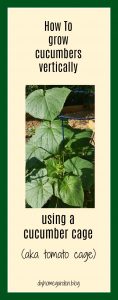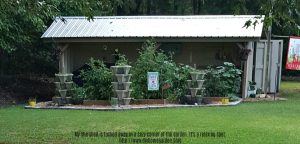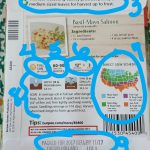As the heat of summer in NC rages on, I am shifting focus to prepare the garden for fall vegetables that I will plant soon. Here are 4 tips on turning your summer garden into a fall vegetable harvest. I planted my summer garden on the early side, around mid-April. At this point, I have harvested all I can of several vegetables.
RELATED POST: Vegetables to Plant in Your Garden Right Now

As the heat of summer in NC rages on, I am shifting focus to prepare the garden for fall vegetables that I will plant soon. Here are 4 tips on turning your summer garden into a fall vegetable harvest. I planted my summer garden on the early side, around mid-April. At this point, I have harvested all I can of several vegetables.
Despite the fact that my cucumbers have been done for a couple weeks, and my larger tomato plants are spent, I am still working in my garden.

“Why?” you may ask. The reason is that I am planning to start my fall garden in a week or two. I will plant a fresh rotation of herbs, kale, and lettuce. There are still long days of daylight left and I want to take advantage of it!
Here are tips on how to prepare your garden for fall vegetables:
1-REMOVE PLANTS THAT ARE NO LONGER PRODUCING
First, keep an eye on your plants throughout the summer. Remove any plants that are no longer producing. And, remove them as soon as your 100% certain that they’re done.
Here’s an example. My cucumbers went strong from the end of May until the middle of July. Then, it got over 100 degrees every day. I watched for about 5 or 6 days and saw no new blooms. The edges were dry and starting to curl up.
I pulled them up immediately once I realized they were done. Removing plants quickly after they are done producing helps your garden soil to retain nutrients and moisture. There was no need to continue to have the cucumber plants absorb water and fertilizer. Pulling them out made the jalapenos, which were still going strong, even healthier looking.

2-CHECK FOR SIGNS OF DAMAGE
As you are removing the unproductive plants, take a good look at them for signs of damage. You may find that insects were eating them, spots of mold, or disease. This information will help you determine if you over watered and caused mold, or if you possibly have an infestation.
Either way, you will need to make the proper adjustments to that. This can vary from area to area as we don’t all have the same amount of rainfall or heat.
Also, it can help you improve your gardening techniques next year.
For example, a swarm of Japanese beetles settled in on my sweet peppers this year. I was away for a few days and returned to sweet pepper plants just about destroyed. But I was fortunate that they fixated on the sweet peppers and didn’t eat everything else!
Then I was able to head out and purchase a trap to catch these little buggers before they continued their destruction. Next year, I will take preventative measures and place a trap around the end of June when they begin their migration into my area.
And yes, I pulled those damaged sweet pepper plants out right away.
3-AMEND THE SOIL
As you are pulling out old plants, amend the soil with compost, peat moss, or fertilizer. This is your choice. If you want an organic garden, choose compost or peat moss. If you want to fertilize, go for it.
Throughout the first half of summer, your garden plants have been absorbing all the nutrients that you added at planting, plus most of any that you added back in during the growing season.
Treat your fall rotation of crops to the same good healthy start as your first crops and you will be able to grow right until the first frost.
4-PLANT AT THE APPROPRIATE TIME
Check your seed packets, and read them for information on planting seasons. Many of them will tell you that you can plant, in your zone, in May and September or April and August, etc. If you’re not sure how to find this information, click on this link: How To Read a Seed Packet.
In addition, you can amend the soil and plant some plants while your first rotation is still going strong.
For example, I pulled out my cucumbers and the damaged sweet peppers. Then, I amended my soil and immediately started some snap beans. They are quick growing, don’t mind the heat, and will produce in about 60 days. They are right next to my jalapenos and seem to be doing just fine.
Follow these 4 tips and you can turn your summer vegetable garden into a fall garden and enjoy the bounty of fresh vegetables all the way into the fall!





